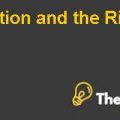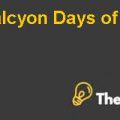To What End? Re-thinking Terrorist Attack Exercises in San Jose Case Study Help
In addition to this, the components of the multiyear large and smaller exercise planshould include some factors such as; purpose, point of contact, capabilities-based training/ program priorities, improvement tracking, and methodology and multiyear large and smaller exercise plan schedule. Moreover, the multiyear large and smaller exercise plan would help in focusing on continuousimprovements. Performing smaller and large scale exercises would help in assuring that each member in the task force and each DOD consultant stay current in their preparedness roles as well as also facilitate understanding of the new consultants and membersof the preparedness plan and operations. The smaller and large scale exercises would also help in the determination and evaluation of the updates and changes required to be embedded into the ERPs, and the identification of the need for further mission-critical resources.
The planning in the multi-jurisdictional and the multi-agency environment would help to make sure that the plans are effectively communicated and coordinated with the response partners, building strong and positive relationships and reducing redundancy. The priorities of the multiyear large and smaller exercise plan would be identified through conducting the review of the vulnerability assessment of the existing plan, lessons learned from the previous year exercises and recent incidents and attacks, Improvement Plan (IP), any recent regulation and act or initiative.
Recommendation 3
Gap evaluation
The identification of the deficiencies, excesses, gaps in the preparedness capabilities is significantly important for the improvement of the performance of each member of the task force and DOD consultant. The periodic review of the gaps in planning and preparednessprogramswould help in the efficient execution of the plan, resulting in desired outcomes. The documented evaluation process for the development of the after-action reports and addressing the suggestion of those reports is fundamental to identify the key improvement area (Tavis, 2016 ).The completed evaluation instruments would lead to;
- A baseline of the emergency or terrorist response program for the MMRs jurisdiction
- A more focused on the key surge and mass care causality planning, response coordination, and state, federal and regional resource integration.
- Management of the medical or health consequences of the terrorist attack
The evaluation of the exercise and training designed for terrorism preparedness is needed specifically in light of the long term and substantial investment needed for these programs. The evaluation should take into account the opportunities to improve the recognition and benefits of the work of the consultants and task force members. It does appear that the improvement opportunities in the response system ranging from better coordination as well as planning to more effective and on-going monitoring and evaluation. The efforts for the assessment of the effectiveness of the terrorist attack response program is highly based on the in part on an evaluation of the other program’s effectiveness(Obi, 2008).
As the evaluation is the core component and cornerstoneof the exercises and training of task force members and consultants, it must document the areas for improvement and strengths in the preparedness of the jurisdiction. All of the exercises and training provided to the DOD consultants and members of the task force should be evaluated and the Improvement Plan (IP) and After Action Report (AAR) of anexercise and training should be submitted by the jurisdiction. The evaluation should be taken place with the use of the pre-developed Exercise Evaluation Guides. The Improvement Plan (IP) and After Action Report (AAR) should summarize the exercises and training events as well as incorporate the corrective actions for the improvement.
Issues 3
Frustration among exerciseparticipants and planners
The frustration among the planners and the participants of the exercise is the core concern that should be addressed effectively. The participants of the exercise were confused about whether they should put the view of consultants or they are free to move around and consult with each other. The lack of clarity and increased confusion led to the ineffective implementation of the MMTF exercise.
In addition to this, the MMTF Director Frances L.Edward was frustrated by many aspects of the exercises. He was surprised witnessing that the first responding company did not respond and shown no familiaritywith the response protocols of WMD. Edward witnessed that the fire company as a first responding company had not shown familiraiarty with the response protocols of WMD. Not only this, but the firefighters were also chaotic and confused about the difference between the technical and gross decontamination. Additionally, the commnader of the incident was quite vague about the task force in terms of what resources he should supplied and whether it would be righteous action to call it in to address the situation. Edward was anxious and worried about how to communicate with the fire fighetrs about their mistakes due to the fact that highlighting the flaws of opposite party could make them embaraased and ashamed.
Recommendation 1:
Clarity of Objectives
The importance of the leadership and communication in the chaotic situation that a unified, as well as a coherent message,should be developed in order to improve the interpersonal connectedness and communicativeness among the participants and planners of the MMTF exercise and training. Additionally, the threat of the mass-casualty WMD terrorist attacks warrants the consideration of both bottom-up programs as well as top-down communication plans that would enable the greater number of consultants to constructively participate in the defense of the city (Granger, 2018).
There are various goals and objectives which are predominant at different levels of the terrorist enterprise (Ditzler, 2003). For example; it is significantly important that the operational leader is strategically oriented whereas the inspirational leaders need to be ideologically oriented. Also, the individual operatives should be hired based on the attainment of objectives and goals.As the core reason behind increasing frustration among the exercise participants and planners was the lack of clarity of the purpose and the ways to accomplish those purpose, so setting as well as maintaining the clarity of the purpose among all exercise participants and planners in all dimensions would help task force maximize the opportunity for the true success(Thakor, 2018).
The clarity in the objectives would help the exercise participants and planners to enhance the local capabilities by training, equipping and organizing medical, rescue, fire as well as other emergency management personnel to deal with the consequences of the terrorist attacks. The unified action is one of the most comprehensive objectives and goals that emphasize the cooperation and coordination of the exercise participants and planners towards the common goals and objectives.
In addition to this, the identification of the clear objectives is required to reach the common goals and objectives and to ensure that each member of the task force, firefighters, participants and planners of the exercise would get informed about the goals and ways to reach those goals and objectives or the specific initiative and step. It would enable significant engagement, cooperation, and conversation with the exercise planners and participants and firefighters related to the strategic actions that could best deliver on key MMRS needs and opportunities. The clarity of the goals and objectives to every member of the metropolitan medical task force (MMTF) and the exercise planners and participants gives the task the shared knowledge and understanding of the success that would tend to ensure that all the exercise participants and planners and task force are working towards the similar purpose.
Recommendation 2:
Strategic leadership & direction
The preparedness program not only deals with the immediate response but also to long term reconstruction and recovery. The strategic leadership should reexamine the goals of the metropolitan medical response system, select the strategies for goals that are compatible with the revised objectives and goals as well as incorporate the number of mitigation measures into both immediate decision making and long-range planning. Additionally, the act of strategic leadership should provide the sense that the events are under control and understood. The roles of the strategic leadership should include;
- Training, planning, and exercises
- Crises response
- Crises communication
The role of the leadership is to provide the members of the task force, planners and the participants of the exercise with both the sense of vicarious sense of control and comprehension. The clear intent and guidance of the commander, enriched by the intuition and the experience of the commander would enable the members of the task force and the exercise planners and participants to achieve objectives. The commander and the control function is network-enabled as well as commander-centric to facilitate the decision making and initiative at the lower appropriate level.
It is significantly important that the commander tends to delegates roles, duties, responsibilities, and decisions to the subordinates which would lower the detailed control and empowers the initiatives provided by subordinates to make a decision on the basis of the guidance of the commander rather than constant communication. The leader should be the central figure in the operational art not only because of the experience as well as education but also because of the decision and judgment of the commander guide the participants and members.
The leader should ensure the provision of the personnel services and logistics services in order to maintain the operation through the accomplishment of the mission and redeployment of the forces. The sustainment would provide means to enable endurance and freedom of action as well as to extend the operational reach. It would also determine the depth to which the exercise participants, firefighters, and planners could conduct the decisive operations allowing the leader to retain, seize and exploit the initiative.
Moreover, the operational approach and mission of the leader as well as the philosophy of mission command should be the guiding principles to organize the exercise participants, planners and task force for successful operations. Thorough providing the strategic direction to the task force, firefighters and exercise planners and participants, the frustration would be reduced and clashes would be resolved to a greater extent.
Recommendation 3:
Foster the culture of internal collaboration & communication
Concerning the issue faced by Edward, there is a need to foster the culture of internal communication and collaboration and encourage teamwork to reach the desired objectives. It would improve communication, analytical thinking and develop the ability to defend one's viewpoint with logic. The timeliness and nature of effective internal communication would dramatically impact the conduct of operations and specifically engages and impacts its valuable participants.
The engaging task force, firefighters and exercise planners and participants intellectually, emotionally, physically and mentally for the security of the city, and unleashing the talent of them is one of the most predominant and critical factors because of an increaseddynamicity prevalent in the market. The internal communication within an organization plays an effective role in various means, such as; making strategic decisions, achieving superior outcomes, allowing change management, allowing feedback loops, maintaining city’s stability as well as leveraging the exercise participants and task force’ performance.
To increase the courage and willingness to take risks among exercise participants and planners and task force, there is a need to support them taking a smart acceptable risk and help them to learn from their past mistakes. If there would be more people modeling smart risk-taking behavior, the easier and quicker it would be to create the culture.
When measuring an individual’s performance, benchmarks or performance criteria must be established. They should be encouraged to exceed those benchmarks and performance criteria, and these benchmarks or performance criteria are identified from standards adopted by a range of specialists. The leader should create new work and service offerings as well as fostering an environment of exploration, imagination and acceptable risks and what if’s. Creating the open environment that fosters the communication within the team members would result in many benefits such as increased and improved efficiency and morale, continuous improvements, needs fulfillment, innovation, synergy, better & faster decisions as well as a pool of expertise, ideas, and resources.
Conclusion
MMTF Director Frances L. Edwardbecame frustrated with many aspects of the WMD exercises. The MMRS tends to supports the local responders’ coordination within each of the largest 122 metropolitan zoning areas.The susceptibility to terrorist attacks makes the disaster response program of the nation all the more critical. The effective, as well as rapid response,could make the difference between having few and many casualties as a result of the disaster and attack. The MMRS is engaged in enhancing and integrating existing response system to respond to surge event and mass casualty, embedding specialized exercise and training and customized incident planning, providing specialized equipment and pharmaceutical acquisitions which includes but not limited to; medical supplies, communication equipment, and protective equipment, etc., using the all-hazards planning approach and prioritizing the activities of response and resource allocation until significant external resources are operations and arrive typically between 24 and 72 hours period.
To address the issue of Clash of cultures between Metropolitan Medical Task Force (MMTF) and DOD Consultants, various recommended strategies are suggested such as negotiation, perspective taking and group-based strategy. The failure of three MMTF exercises should be addressed through the multijurisdictional, interdisciplinary and specialized training of the consultants and task force, planning large and smaller-scale exercises and gap evaluation. In addition to this, the frustration among exercise participants and planners should be addressed through clarifying the goals and objectives, strategic leadership and direction and foster the culture of collaboration and communication................................
This is just a sample partical work. Please place the order on the website to get your own originally done case solution.









